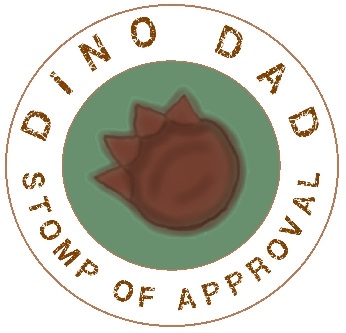I come from a background where the subject of evolution was always a contentious issue. I spent a good portion of my dino-obsessed childhood reading up on snappy “gotcha” zingers to use against evolution rather than actually researching ways to make good use of my interests. At least part of it involved a misapprehension of what evolutionary theory actually entails. As it turns out, all one really needs is a proper introduction to the concept, which reveals a much more intuitive idea than it may seem at just a cursory glance.

Grandmother Fish: A Child’s First Book of Evolution seeks to be the definitive representation of its own subtitle. I’ve found very few books that actually take the time to explain the basic ideas behind evolutionary theory to young kids, leaving them to slowly absorb whatever knowledge they can about it through cultural osmosis. Such an oversight leaves them open to all kinds of mistaken ideas, and Grandmother Fish nips that in the bud by clearly demonstrating the core idea through show, rather than tell.

Written by Jonathan Tweet, and illustrated by Karen Lewis, the story follows our lineage through five key points, starting with the eponymous “Grandmother Fish”, and progressing through grandmothers Reptile, Mammal, Ape, and Human. At each stage, the book introduces new features characteristic of that animal, while showing how it retains the features of its previous ancestors. For extra fun, the book encourages children to act out each new feature, making for a very engaging experience!

By the end we see that our ability to “wiggle and chomp and crawl and breathe and squeak and cuddle and grasp and hoot and walk and talk” has been handed down to us from a long line of successful ancestors, none of whom was truly completely distinct from their own ancestors, but merely added new features to their list of inherited traits. Rather than innumerable cases of spontaneous generation, organisms truly do continue to reproduce after their own kind, even as they gradually become more distinct from their evolutionary “cousins”. It’s probably the greatest example of the classic saying, “The more things change, the more they stay the same”. For all their differences, all creatures generally retain the most important features of their ancestry.

This review has rapidly become like those summaries on the back of baby board books that end up being longer than the actual story. Grandmother Fish is written in very simple, clear language that any child can understand, and it’s remarkable how it manages to convey its core concepts without actually explaining them in words. Rather, simply by listing each new feature, while showing how they all nest within each other, these demonstrations do more than mere explanatory text ever could, especially at the target age for this book. In case you do want further explanation, though, the book also includes a helpful appendix, with a large tree of life showing all the connections, and more in-depth explanations of core concepts that parents can help interpret for their children should they feel curious enough to ask further questions about what they’ve learned.

I’m very impressed by this book, and my children love acting out each page. More children’s science books could stand to take a page from Grandmother Fish, so to speak. (Update: …and since writing this review, more have! Out of the Blue is very much a “spiritual sequel” to Grandmother Fish for slightly older audiences, going into more detail, particularly with regards to the transition from sea to land.) It’s rare to see one that so effortlessly introduces the core concepts behind a scientific theory without having to over-explain it, especially when a lot of technical jargon can end up leaving some people even more confused than before. Perfectly written, and charmingly illustrated, my only complaint is that this book was not introduced to the world sooner. I give this a hearty Dino Dad Stomp of Approval!

To learn more, you can check the official Grandmother Fish website, or follow the official Grandmother Fish Twitter account. You can follow author Jonathan Tweet on Twitter as well. Check out this Clades card game he’s developed! I’m intrigued, but I’m on post-holiday financial lockdown, so I can’t purchase it myself for a review right now. It looks good though! If you’d like to see more of illustrator Karen Lewis’s artwork, you can check out her personal website as well! And don’t forget to follow Dino Dad Reviews on Instagram and Twitter for more paleo-fun!


11 comments